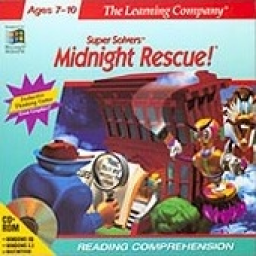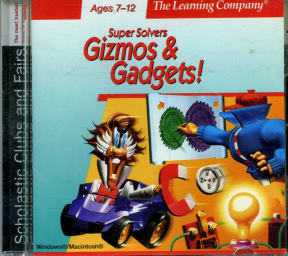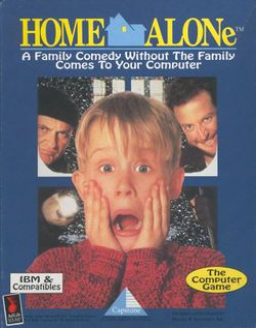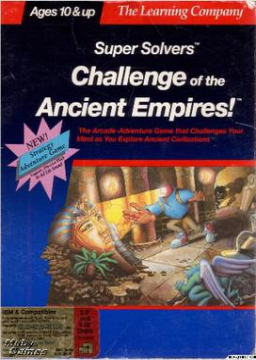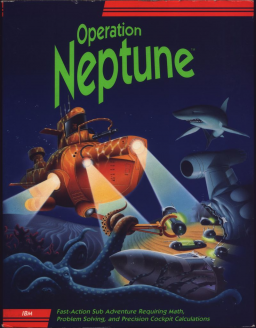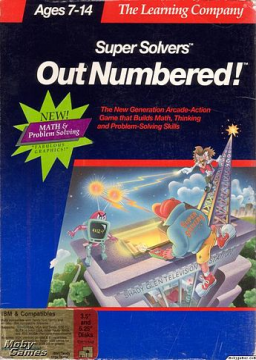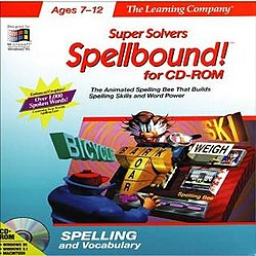You can find Warcraft and Warcraft II here:
Warcraft: https://classicreload.com/warcraft-orcs-humans.html Warcraft II: https://classicreload.com/warcraft-II-tides-of-darkness.html
I'm not addicted, I could stop whenever I want... I just don't want to right now...
- If the level completion is as short as 7 - 8 seconds, you're going to want to make the timer more accurate. As in, give the time in milliseconds as well, because runs of levels this short are going to be super close, and showing the completion time is irrelevant if it is always going to be the same for the fastest runners.
A couple of suggestions:
-
In general, the play seems kind of slow relative to games like it out there. I feel like you are underestimating the ability of your audience. What I mean by that is that the upper limit won't be my reflexes, but how fast the board is, and that's boring. Are there any upgrades you can get to improve the speed of the vehicle (is it a surfboard?) Maybe you play on different planets that have different gravity and as you progress, you get access to boards that can propel quicker or turn faster or have other unique properties that you can bring back to earlier stages once you've unlocked them.
-
The levels all seem rather straightforward. There's no other way to go through them. If you look at the more popular games, they all have some sort form of "routes", where you can mix and match the order that you get the requirements to improve your time. On the stages I've seen in the video, they are simple enough that there seems to be precisely one best way to do each level, and then it becomes a matter of who can run that the fastest, which also takes some of the fun out of it. Again, this is just a demo, so maybe it's not all like this, but I feel like some RNG would do this game some good. Maybe we know ¤about¤ what to expect, but we don't know exactly what to do until the game loads and we see a new randomly generated level.
-
Does the surfer dude ever gain any special abilities? A turbo boost / a metal coat where he drops faster / a board that allows him to jump ¤through¤ shapes / etc. I think throwing these in here would make it a little less straightforward and make the player think a little more about what is the fastest way to complete each round, and that's always more fun than just grinding through the obvious fastest route over and over.
I know it looks like everyone is doing it flawlessly, but for every successful run of a difficult part that you see done flawlessly, there is usually many, MANY mistakes that you don't see that were never uploaded. Nobody who cares about their run will submit one full of mistakes. Anyway, if it was easy, it wouldn't be much fun when it finally goes right.
If it helps, sometimes I try thinking about it in a different way. For instance, don't just react, but consciously think about what buttons you are pressing and the timing between them. It makes it much easier to remember when you hit that patch in the future, and your brain won't spazz out from pressure. When I was running Operation Neptune (which is full of instances where you have to know the precise timing and movement patterns), I tried to associate the individual room with a pattern of key strokes instead of relying on just reactions. Having a good reaction time can save you if things start to go astray, but it should be a last resort. If you're taking 100+ attempts and still not getting it right, think about how you are practicing. Can you close your eyes and walk yourself through the run? Do you know at what point you should hit certain buttons? You're not going to get it all immediately, but if you start small- know what the 2-3 button combos are, then learn how to string the combos together into bigger combinations, you'll soon find yourself able to string together multiple combos without thinking about the nuances of each button's effect.
It's not just about practicing, but practicing ¤correctly¤. Otherwise it's just playing the game over and over. That's not to say that this is the one and only way to practice, but it's what works for me.
Hey, would you mind adding me as a mod? I'd like to play around with the theme and give this page some character so it doesn't look so boring. :-)
For me, it's a personal thing. I do these runs for me, not for people who might be watching. It doesn't mean that I won't talk about them (I usually love to), but I don't really like people to be a part of the run itself.
It doesn't mean we don't talk; we just talk in different ways.
You've gotta remember the basic rules:
Rule 1: You don't talk about speedrun.com Rule 2: You DONT talk about speedrun.com Rule 3: If your accidentally bump your console or unplug it, tilt the cartridge, or your character dies, the game is over. Rule 4: Runs will go on as long as they have to. https://www.speedrun.com/Baten_Kaitos_Eternal_Wings_and_the_Lost_Ocean#100 Rule 5: If this is your first time at speedrun.com, you HAVE to submit a run!
What hallowing and what stir is this today? Lo, what lawful quest have given their verdict up unto the frowning judge? These follies are within you, and shine through you like the water in a urinal, that not an eye that sees you but is a physician to comment on your malady. Since you will buckle fortune on my back, to bear her burden, wherever I will or no, I must have patience to endure the load. I have considered in my mind the late request that you did sound me in. I play the torturer by small and small to lengthen out the worst that must be spoken. Fewness and truth; 'tis thus: forsooth, I humbly beseech thee to forgive my most grievous transgression. If I unwittingly, or in my rage, have aught committed that is hardly borne, by any in this presence, I desire to reconcile me to your friendly peace. Men shall deal unadvisedly sometimes, which after-hours gives leisure to repent. Oh speedrun dot com, thou art the table wherein all my thoughts are visibly charactered and engraved. I hope this message finds you in good health and in a prosperous position. Let me hear from thee by letters of what news else betideth here in absence of thy friends. The sum of all I can, I have disclosed; I trust my absence doth neglect no great design which by my presence might have been concluded. Even as a splitteed bark, so sunder we. I fare thee well, and by my troth, I am off!
I am tempted to say 186,000 miles per second, but the speed of light isn't the limitation.
Photons in a vacuum travel at the speed of light, but photons in anything else travel slower. In my ethernet cable, it's probably closer to 119,000 miles per second. The reduction in speed depends on the permittivity of the material used, so speed will be faster with fiber optics than with my ethernet cable. However, the information itself is even slower than that. At the base level, all information on computers is stored in zeroes and ones, but a single photon doesn't carry much information. On hard drives that use spinning discs (most of your computers unless you have a something solid state) is typically encoded with the change of states of the energy or the polarization of a magnet at a very specific point on that spinning disc which means that these changes can only be made at lower rates than the fundamental transmission speed and rotations per minute of the disc.
To make things more complicated, the energy and the rates of change require physical materials to convert the photons into something more usable. This is because the channel used for transmission usually conducts energy at a maximum rate called bandwidth, which is generally what is measured for network speeds because it is usually the limiting factor. This is why fiber optics can transmit signals quicker and with less loss than copper wires.
However, if we are to be accurate, we must also include the time taken to encoded and decoded when the data is transferred between different protocols (set of rules that governs the communications between computers on a network). The most well known ones are HTTP (seventh layer), IP (3rd layer), TCP (4th layer). Many different types of network protocols and standards are required to ensure that your computer can understand the computer it is communicating with. Though there are actually seven different clearly defined OSI layers, from the first layer (Ethernet) to the seventh layer (HTTP / DNS / FTP / Telnet / etc.).
There is a lot of extra data transmitted with error correction, routing information, encryption and other protocol data in addition to the raw data, though not all protocols include error-checking (live streaming, for instance, doesn't do error checking, because why would it? If something is being streamed live, if certain information is dropped, the receiving computer isn't going to go back and check it).
So. Why is a fiber optics cable faster than an ethernet cable? Glad you asked. No, I definitely heard you ask. Okay, so the short answer is that fiber optics can conduct higher energy charges, and photons with higher energies, by definition, are at higher frequencies. The energy of a photon is h ¤ f where "h" is the plank constant (6.63¤10^-34 J.s) and "f" is the frequency of the photon. What does frequency have to do with anything? Well, in general, we want to create a strong signal oscillating at the most efficient frequency for the transmission channel to conduct it. If the frequency is either too low or too high, we lose our signal's power because the medium will respond differently to different levels of energy. In material science, these values are well documented for the most commonly used materials as FmaxF and Fmin.
There all sorts of ways to add information to an oscillating wave (Tesla was a friggin genius), but in general, the amount of information you can add to an oscillating wave is proportional to either the rate the channel can respond to it or bandwidth of the system (though you still have to stay between Fmax and Fmin). Information exchange in our computers works in a similar manner to our bodies' thermoreceptors. How do we know if something is hot or cold if all nerves can do is send basic electrical signals? Well, it turns out that the brain can determine if something is "hot" or "cold" by the frequency of electrical impulses coming from a certain nerve. So let's say a thermoreceptor (the receptive portion of a sensory neuron that codes absolute and relative changes in temperature) comes into contact with something. It will send the same electrical signal to the brain in more rapid succession if the object it is touching is hotter.
As it happens, the higher the operating frequency, the easier it is to get wider bandwidths. For example, a radio at 1GHz with 10% channel width only allows for 100MHz of max switching rates, but a fiber optic signal at 500THz, a 10% channel width means a 50THz max switching rate. This is a huge difference! So why do channels have frequency limits, and why 10%? Well, 10% is just a typical example, but pretty much every transmission channel has limits to the energy levels they can absorb, reflect, and conduct. In simpler terms, an x-ray (relatively high frequency & high energy charge) goes right though a lot of materials, whereas heat (relatively lower frequency than even visible light) doesn't transmit well through paper, but it can through glass. So the moral here is that there are frequencies where photons can be used to carry energy and frequencies where they can't.
So in conclusion, yes, all photons travel at the speed of light in a vacuum, but they can't carry information at that rate. This doesn't even take into effect disruption of the signal by other signals at nearly the same wavelength and frequency. Have you ever wondered why wifi generally sucks? Well, usually, there are a bunch of routers all trying to send the same signals at the same frequency, and they are all disruption each other. In information theory, the noisy-channel coding theorem says that for any given degree of noise contamination of a communication channel, it is possible to communicate information nearly error-free up to a computable maximum rate through the channel, called the "Shannon limit".
If you've gotten this far, you're probably thinking "Hey Oddtom, since cables carry electricity moving at the speed of light, why aren't computer networks much faster?" Well let me answer that with another question: If air carries sound moving at the speed of sound, why can't I talk to you much faster? Do you see what I'm saying? If we're both in a perfectly quiet room, I can probably speak very quickly and you can still hear me, but as we get farther apart or the environment gets noisier, I'll have to speak slower and more clearly for you to understand me. In this example, the maximum speed is not due to the latency, but how quickly I can signals that you can reliably receive. In networking terms, this is limited by noise and distortions introduced by the cable. This is why fiber optics are so much better than ethernet cables, especially for long distances. It is much easier to manufacture a fiber optic cable that does not permit outside interference and introduces very little distortion, which is why fiber optic cables are usually preferred for long distance networking.
THE END
ah crap, I forgot to post my speed. Lol. I love every single one of you in the most platonic way possible.


